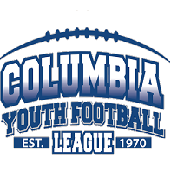Flag Football

Flag Football
Lorem ipsum dolor sit amet, consectetur adipiscing elit. Ut elit tellus, luctus nec ullamcorper mattis, pulvinar dapibus leo.
Rules
Flag Football Rules
Rules
1. At the start of each game, captains from both teams meet at midfield for the coin toss to determine who starts with the ball. The visiting team calls the toss.
2. The winner of the coin toss has the choice of offense or defense. The loser of the coin toss has the choice of direction. Possession changes to start the second half to the team that started the game on defense. Teams change sides after the first half.
3. The offensive team takes possession of the ball at its 20-yard line and has four plays to get a first down. (First down every 20 yards)
4. If the offense fails to score, the ball changes possession and the new offensive team starts its drive on its own 20-yard line.
5. If the offensive team fails to get a first down, possession of the ball changes and the opposition starts its drive from its own 20-yard line.
6. If the defense intercepts the ball, a defensive player can attempt to return it until down or out of bounds.
7. All possession changes, except interceptions, start on the offense’s 20-yard line.
DOWNS (1-2-3-4)he offensive team has four attempts or “downs” to advance the ball. It must cross the line to gain to get another set of downs or to score.
BOUNDARY LINES | The outer perimeter lines around the field. They include the sidelines and back of the end zone lines. |
LINE OF SCRIMMAGE | (LOS) an imaginary line running through the point of the football and across the width of the field. |
LINE-TO-GAIN | The line the offense must pass to get a first down or score. |
RUSH LINE | An imaginary line running across the width of the field seven yards (into the defensive side) from the line of scrimmage. |
OFFENSE | The team with possession of the ball. |
DEFENSE | The team opposing the offense to prevent it from advancing the ball. |
PASSER | The offensive player that throws the ball and may or may not be the quarterback. |
| RUSHER | The Identified Defensive Player that is at least 7 yards from the line of scrimmage assigned to rush the quarterback to prevent him/ her from passing the ball by pulling his/her flags or by blocking the pass. |
| LIVE BALL | Refers to the period of time that the play is in action. Generally used in regard to penalties. Live ball penalties are considered part of the play and must be enforced before the down is considered complete. | DEAD BALL | Refers to the period of time immediately before or after a play. |
|
WHISTLE |
Sound made by an official using a whistle that signifies the end of the play or a stop in the action for reporting a penalty, a timeout, halftime or the end of the game. |
INADVERTENT WHISTLE |
Official’s whistle that is performed in error. |
|
CHARGING |
An illegal movement of the ball-carrier directly at a defensive player who has established position on the field. This includes lowering the head or initiating contact with a shoulder, forearm or the chest. |
FLAG GUARDING |
An illegal act by the ball-carrier to prevent a defender from pulling the ball-carrier’s flags by stiff arm, lowering elbow or head or by blocking access to the runner’s flags with a hand or arm or ball. |
|
RIGHT OF PLACE (ROP) |
Right of place is given to any stationary players who maintains normal player posture and make no movements in any horizontal direction to change their position. A purely vertical movement, including a lift from the ground, in order to throw or catch a pass does not mean that a previously established right of place has been lost. Right of place supersedes right of way when determining who is guilty of a foul. |
RIGHT OF WAY |
Right of way is given to a player according to rule who has established a direction of movement in a regular manner and does not alter that direction. A player with right of way has a higher privilege when determining who is guilty of a foul than all other players except those with right of place. |
©2024. Columbia Youth Football League. All Rights Reserved.
